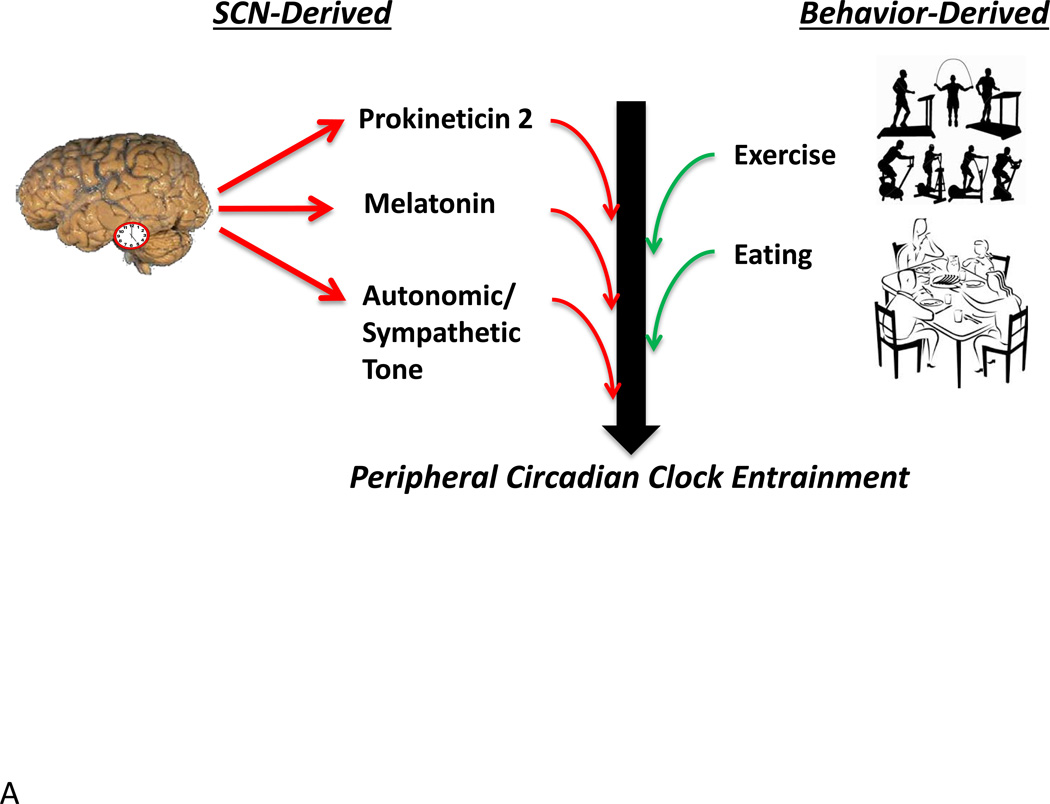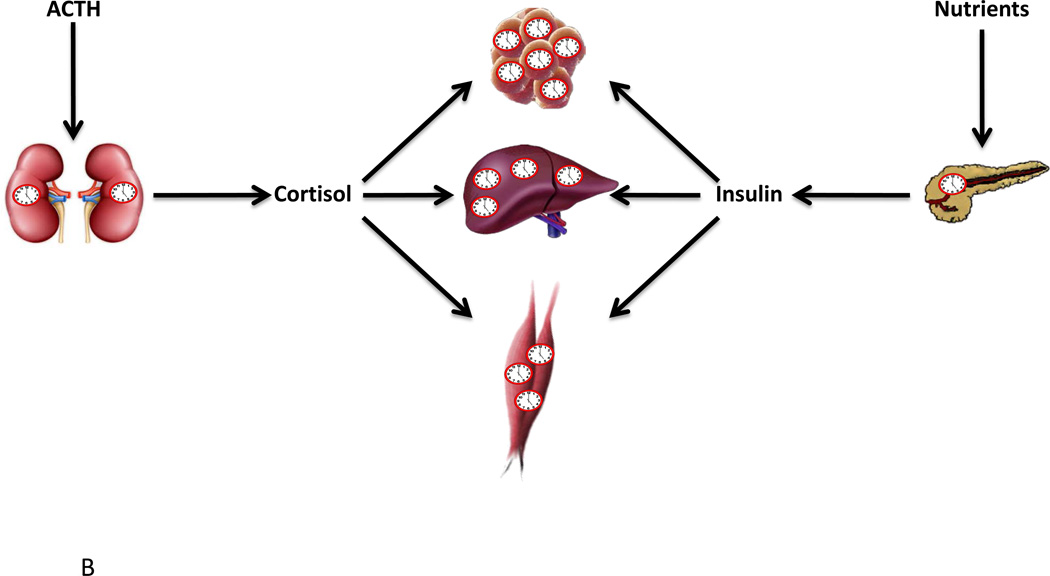Figure 2.
SCN and non-SCN derived entrainment of peripheral circadian clocks (A) and the impact of cell autonomous circadian clocks on endocrine factor release and sensitivity (B). As discussed in the text, peripheral circadian clocks are entrained (re-set) by both SCN- (e.g., prokineticin 2, neural stimulation) and behavior- (e.g., feeding, physical activity) dependent influences (A). Circadian clocks within the adrenal cortex contribute to diurnal variations in cortisol release, through modulating sensitivity to ACTH, while the β-cell circadian clock is appears to be similarly critical for insulin secretion (B). In addition, circadian clocks within target tissues (e.g., adipose, liver, skeletal muscle) potentially modulate sensitivity to endocrine factors in a time-of-day-dependent manner (B).


